
The Wise Man of the Solent - Tony Blachford
by Dougal Henshall 12 Jan 2024 23:00 AEDT
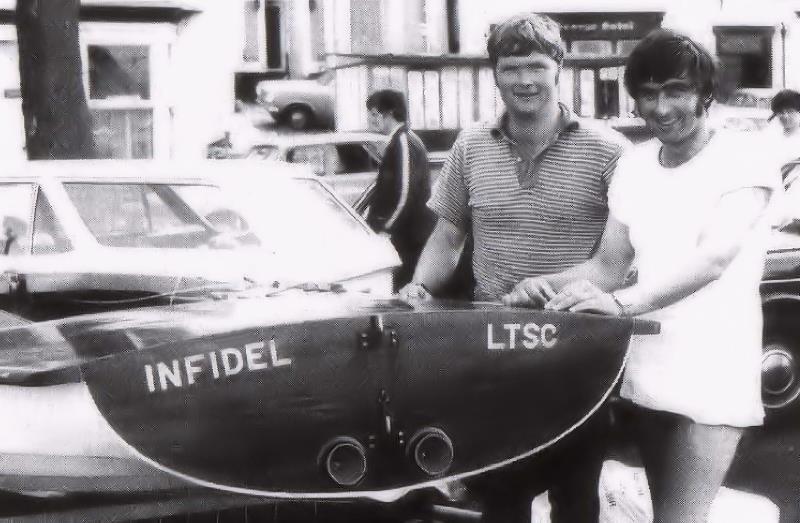
Tony Blachford (left), crew Brent Strickland, and the unbeatable 'Infidel' © Blachford Family
Amongst the many celebrations that we enjoyed during 2023 was the 70th anniversary Championships for the Osprey Class, a dinghy that had gained so much of its DNA from the waters of the Solent.
As the 'after dinner' entertainment, I was able to regale those at the superb Championships dinner with the details of how Ian Proctor and boatbuilder Jack Chippendale had combined their considerable talents to produce what would not just be an amazing dinghy 70 years ago, but one that retains is relevance today.
The short seas and tricky tides might be an ideal platform for the lean hulled Osprey, but they would also be the testing ground for one of the UK's most successful helms as the name of Lymington's Tony Blachford is almost synonymous with the Osprey fleet, seeing that his name is on the Championship Trophy four times in a row.
Across that incredible period Tony and crew Brent Strickland (also his brother-in-law) were rarely beaten in any of the class competitions, which brings to mind the words of another top Lymington-based sailor, whose motto was, "getting to the top is one thing; staying there takes real genius".
Tony's introduction to a life that would be spent out afloat would follow the conventional 'legacy family' line as his father Ted was a keen sailor of dinghies and Folkboats at Lymington Town SC, as well as being on the crew of the local lifeboat.
Growing up in the 1950s and 60s perfectly positioned Tony to ride the development wave that heralded the 'golden era' of dinghy sailing, moreover he was clever enough to get to the local Grammar School, yet good enough with his hands to do well at woodwork, a skill that he would soon be putting to good practice.
In one of those happy coincidences, Tony's interest in dinghies chimed in perfectly with that of another Tony, the so called 'Maverick Major' and hero of the WW2 battle for the bridge at Arnhem, Tony Hibbert. Hibbert was keen to help children learn not just how to sail, but on how to race and run a club, so he had dredged out an 8-acre salt pan at his Lymington property to create a safe environment for fun times afloat.
It would be here that he started the Salterns Sailing Club, with activities originally based around some early British Moths, but the early 1960s were already seeing the development-focused International Moth grabbing the headlines. Based at Salterns, Tony Blachford would quickly move up to the more demanding boat and before long would be modifying an existing design, which he would then go on to home build.
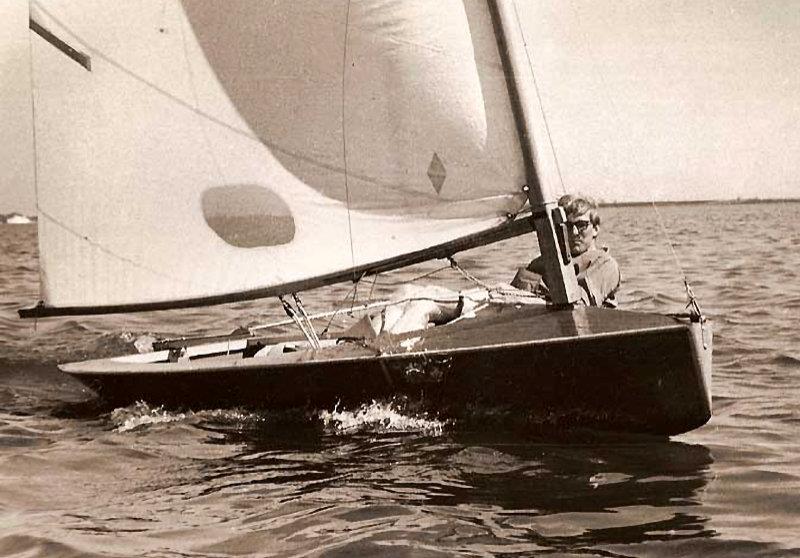
One of the great plus points about the International Moth fleet was the ease with which a clever helm could tweak an existing design to his own specific requirements. Of course, it helped if you also had the skills to do the work yourself! - photo © Lowrider Moth Archive
Although nominally a single-hander, Tony was also known for going afloat with the family dog as crew, which must have been interesting in the cramped cockpit of a Moth.
Tony's father would be hugely supportive of the young sailor, even to the point of selling the family car to help Tony buy his first boat, a trust that he would replay when at just 14 years old he would win his first National event, becoming the Class Youth Champion, before as a seventeen-year-old going on to win the overall 1966 National Championship.
That super summer would see the World Cup being hosted in the UK and after the trophy had been stolen (before being found by Pickles, a collie dog, who would gain his own media following for his efforts) England would compete in the final against Germany. Tony was in the near 97,000 crowd at Wembley to see the winning Captain, (Sir) Bobby Moore lift the Jules Rimet Trophy, which made it all the more delightful that years later, Tony would be able to take his hero out afloat.
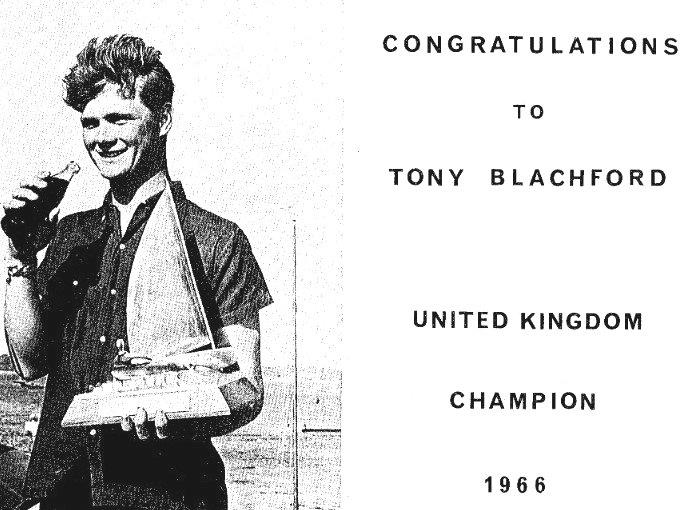
We might not have won the America's Cup but in that huge year of 1966, a game of football was played at Wembley but of far greater importance, the young Tony Blachford took his first full adult National Championship - photo © Blachford Family
When changing classes, it is a good rule to focus on those fleets with a strong local presence and as well as the Moths, Lymington was known for the strength of its Osprey fleet. The Moths might have been the exciting place for a young sailor to be, but they were getting narrower and as he grew out of his teens Tony was not getting any smaller, with it soon becoming apparent that he would need to move up a fleet.
This would bring him into the Osprey and that aforementioned incredible run of victories, but not only was he front running out on the racecourse, the standard of the finish of his boats were a statement in themselves. At the 1975 Dinghy Show at Crystal Palace his new 'Infidel' (all of Tony's Ospreys were called Infidel) was a stunning example of what by now was classed as the 'Mark III' Osprey, but once again Tony showed how he was prepared to very much go his own way, as he eschewed following the current trend of going to Westerly Boats for his hull, instead he headed across the Solent to the Wotton Creek boatyard of master boatbuilder Bill McCutcheon (who Tony had worked with back in his Moth days).
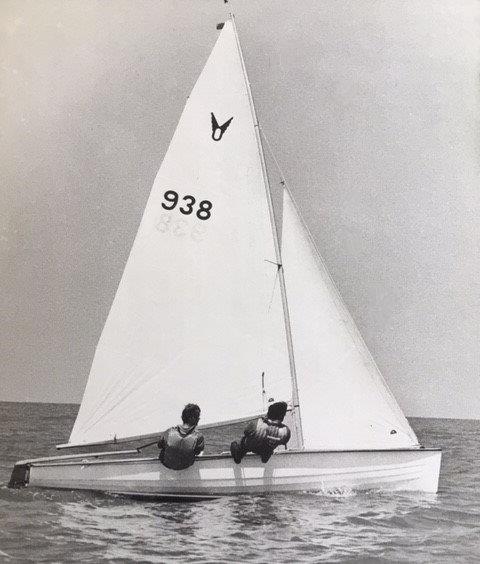
Tony and crew Brent Strickland in one of their early Ospreys. Over the coming years, the pair would dominate the Class with boats that were both beautifully finished and championship winning fast! - photo © Blachford Family
The beautifully finished and fitted-out Infidel would help keep the Osprey class to the forefront of the domestic performance scene, at a time when the first signs of a slow down in what had been the year-on-year growth at the performance end of the domestic dinghy scene were becoming increasingly apparent.
Even as he started to look towards other genres of sailing, Tony would take up the offer of a sail in a Finn, and after his successful campaigns in the Moth he soon felt at home in the bigger boat. A Bob Hoare boat, built just along the coast at Poole would give Tony a chance to show his skills off at the next level and he would soon be picked up by the RYA/BOYA 'Finn Finder' scheme that had been put in place to identify a strong feed of new talent into the UK's Olympic effort.
All of this though corresponded to a period of amazing growth in top flight offshore racing, with owners of everything from the 'sail it like a dinghy' Quarter Tonners up to the big boats of the day, the Two Ton fleet, all seeking talent to drive their boat to success. Once again Tony was well placed to make the most of the opportunities that abounded around the Solent, with the arrival of the ever more popular one designs that were hitting the market, led by the J24 and the OOD 34.
Although the top teams were eager to bring on board the very best of the talents from the dinghy world, the step up to this next level would not be easy and not all would be able to replicate their early successes. It would take a special talent to be the best both in a dinghy and in a big boat offshore, but it would be a move that Tony would relish, and he was soon on the helm of some of the hottest boats around the Solent.
Then Tony showed just how good he was at the back of the boat when in 1975, the Lymington based team with Saracen went out to Hankø in Norway for the Three-Quarter Ton Cup, and although they were not the first UK Team to take one of the Level Rating World Championships, they were the first crew to do it at an 'away' fixture!
It helped of course that Tony was at the heart of the sailmaking industry, where he had been part of the team developing an innovative new venture at Butler-Verner sailmakers. Despite making some quick sails BV wouldn't survive the pressures of moving into the more commercially-minded 1980s, but Tony had already proved his worth and would move on to North Sails.
His helming skills would be in even greater demand so it was unsurprising that he would be yet another of the top helms that got caught out in the 1979 Fastnet storm, where he would sit out the worst of the weather on the helm as many of the crew were suffering from the conditions.
In between all of this Tony still found time to join Phil Crebbin's Soling campaign, where with Mark Dowland they would soon be one of the strongest teams aiming for selection for the 1980 Olympic Regatta at Tallinn. Phil Crebbin recalled fondly how Tony, as the middleman in the crew, provided the necessary strength in what was a physical boat, plus a great deal of the tactical nous that this level of sailing demands.
They had the speed and the collective talent that would surely have seen them not just succeed at the UK Trials, but to go on further towards success at Tallin, only to be denied the chance of competing for a medal. Even before the Selection Trials for the Soling, the RYA had bowed to political pressure to boycott the 1980 Olympic Regatta, move which would still rankle with sailors more than 40 years later.
Away from the travails of the British Olympic sailing scene, Tony would go on to successfully sail in many more level rating events, though the Three-Quarter Tonners seemed to be his forte. Even though he was in near constant demand helping train up various Admiral's Cup Teams, Tony never forgot that early help from his father, so when his son Christopher (known on the Solent as 'Toffer') was born he had no hesitation in pulling out of yet another event up in the Baltic to be with his wife Titch and their new family.
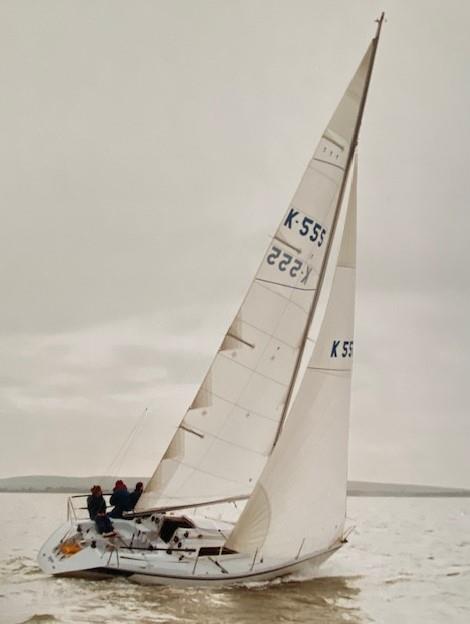
A familiar sight out in the Solent - Smokey 3, the HB31, being sailed by Tony and Titch Blachford - photo © Blachford Family
That didn't mean sailing had to stop though, nor did the racing, as Tony and family were still successfully competing out on the Solent, with the baby asleep in a Moses basket down below, while Titch was up on deck doing bow: one just hoped that they didn't need a sail change at feeding time!
The Solent had always been a happy hunting ground for Tony, with multiple successes in the famous Round the Island race, with a further domination in the West Solent Cruiser racers and the overall Solent Points circuit. Referencing back to that famous quote covering the difficulties of staying competitive for an extended period puts the sheer spread of Tony's achievements, in both breadth of classes sailed and that all important 'time at the top', into a real perspective.
Better still, even when he finally decided to step back from frontline competition, he then went back to the thinking of his old mentor Tony Hibbert by working hard to give something back to the sport. His specialist area was Race Management, where he had all but perfected the art of managing the growing demands of the Match Racing Circuit.
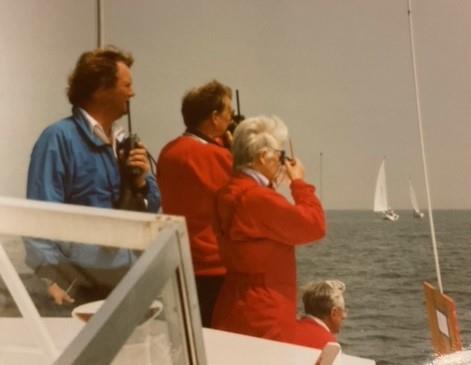
From the front of the fleet to the Race Officering hot seat. Tony, in the blue jacket on the left, running another event for the Royal Lymington YC - photo © Blachford Family
Like so many helms and crews of his generation, he had suffered far too many questionable decisions from poorly qualified Race Officers and as one of the UK's leading exponents of the dark arts, he set about working with the RYA to bring on a new breed of highly skilled ROs through the RYA Race Management Scheme [I can speak with some personal thanks here, as Tony was one of my mentors as I went through the system on my way to National Race Officer status.]
Tony would remain a hugely influential figure on the river at Lymington, where his love of the area would see him working as a Lymington Harbour Commissioner for many years. He would also follow his father into crewing on the local lifeboat where he would end up as coxswain, before retiring, but only to become one of the launch authorities.
He would also follow his father by moving into the Folkboat Class, another fleet where the competition is fierce with places fought over and over, a boat length at a time; he and his wife, Deb, in true Blachford style dominated the front of the local fleet over many years.
The events mentioned are but a thumbnail portrait of a much bigger story, because as a helm and as a leading figure in the sport Tony was first and foremost an incredible character. The friendships he made spanned the world, from helping the King of Thailand with his Moth (and then an OK) to sailing with the best in sailing royalty, including two Kings of Norway and a Spanish King, plus the captains of global industry who saw him as an essential part of their yachting campaigns.
Tony's untimely passing will also leave a huge hole in that sadly diminishing connection with our heritage, that links what we have and what we do today with the earlier years of developments that created the modern sport of sailboat racing. In so many ways he was a giant, a large man with an even larger personality: it is a well-practised cliché to say when someone passes that the 'sport will be poorer for their absence', but the loss of such a well-known and talented helm will leave not just the Solent, a stretch of water that Tony had all but made his own, but the wider sport of yacht racing mourning his loss.
Sail on Tony, your family and friends send you fair winds for your final voyage.
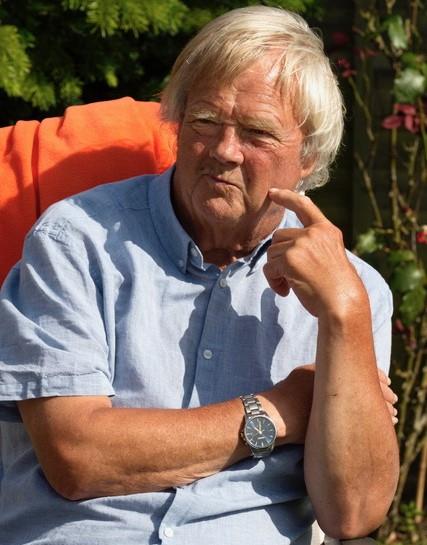
It is one thing to win, but something far more difficult to keep on winning through four consecutive championship cycles: Tony Blachford - photo © Max Mudie / Blachford Family